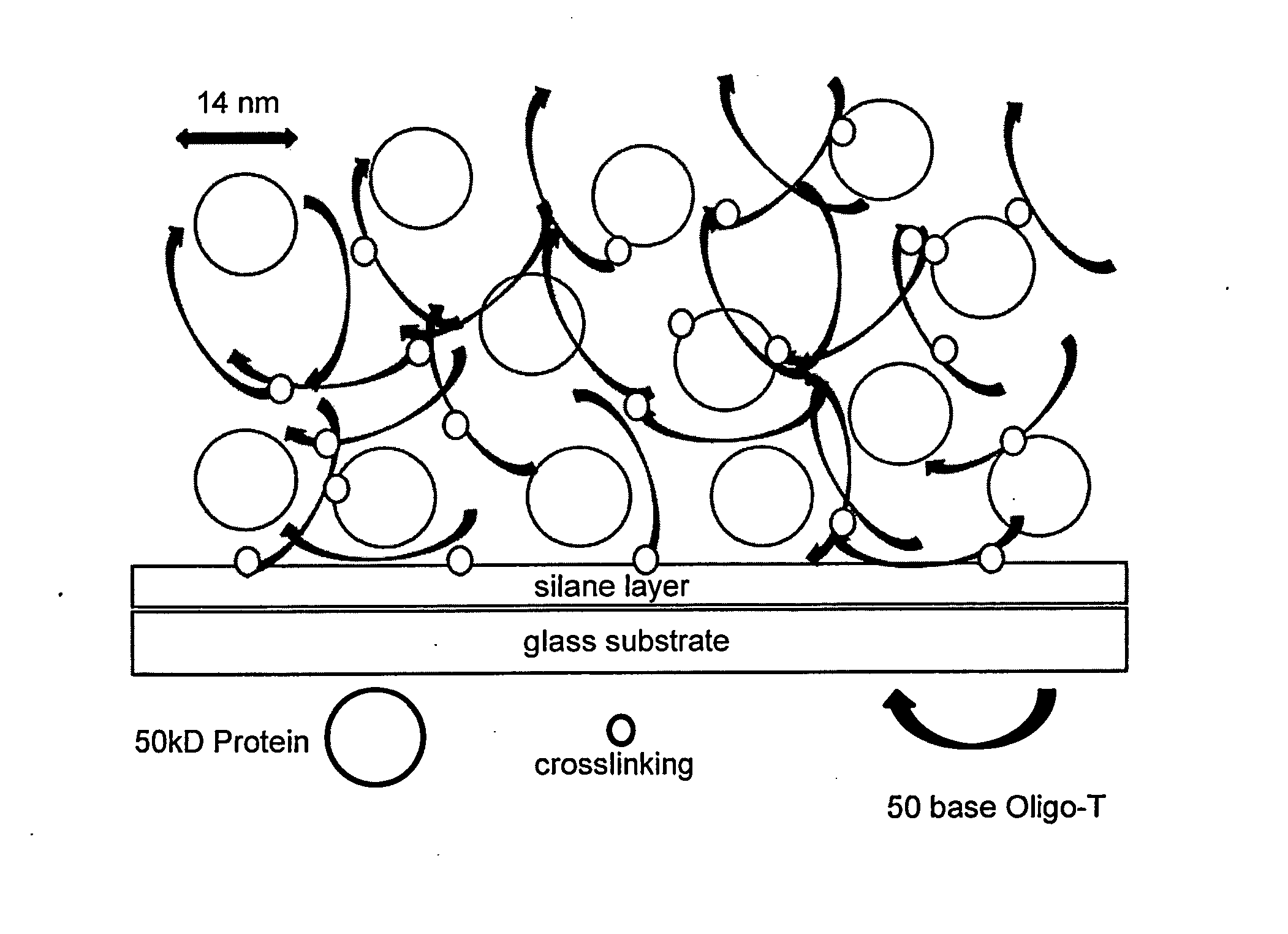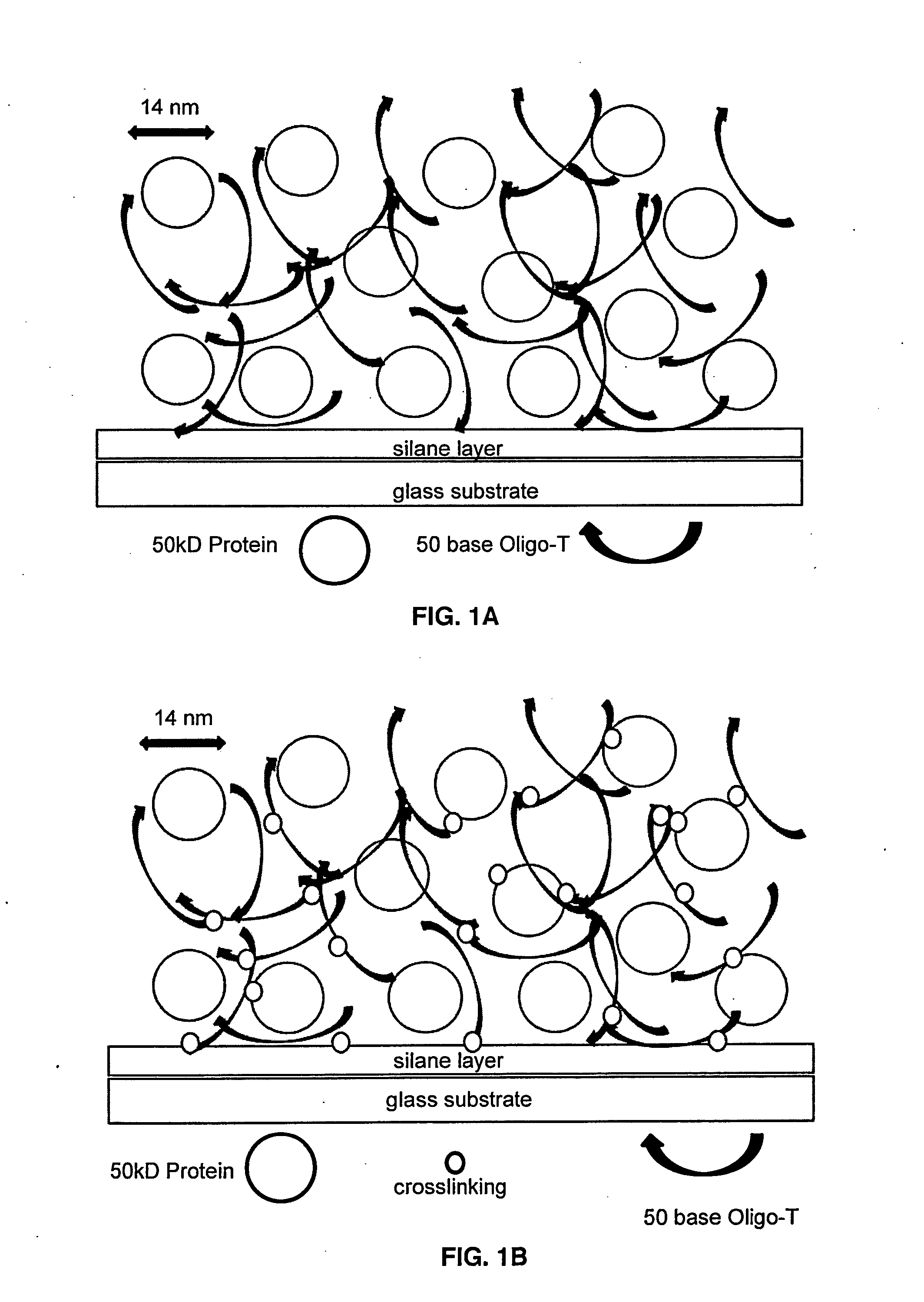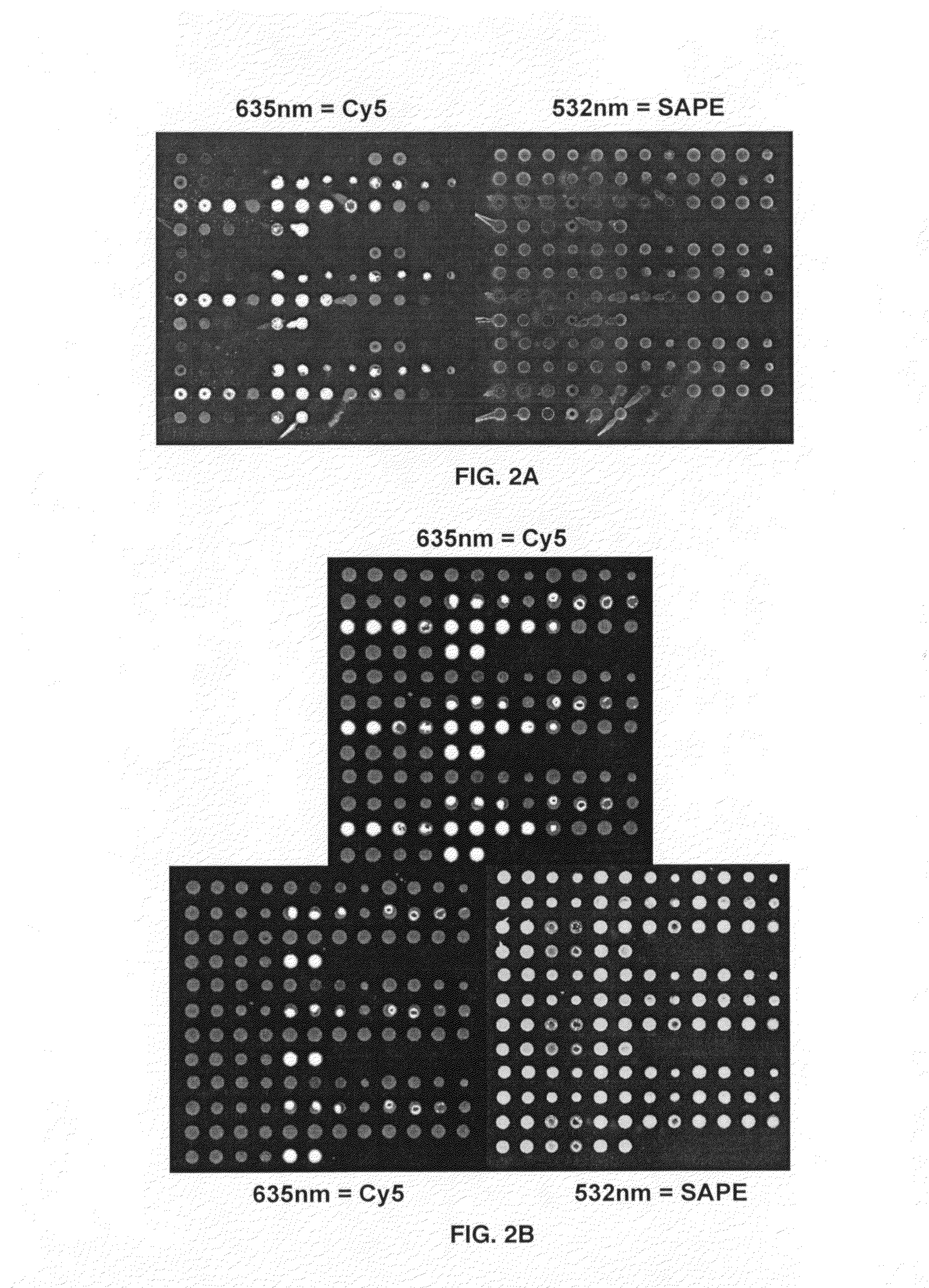Compositions and methods for entrapping protein on a surface
- Summary
- Abstract
- Description
- Claims
- Application Information
AI Technical Summary
Benefits of technology
Problems solved by technology
Method used
Image
Examples
example 1
Structure of a Representative Microarray, to be Printed for the Purposes of Testing Oligo-dT Entrapment of Protein on a Microarray Surface
[0032]A single protein, for example, bovine albumin, can be printed to form a microarray. Each spot in the microarray can differ in the protein concentration, the Oligo-dT concentration and the water soluble, non-volatile solute to be added (at @1% by mass) at time of printing. Buffer concentration can be as needed, but 2 mM Na2Phos, pH 8.4 is representative.
TABLE IFormulation of the individual microarray spots to vary Protein,Oligo-dT and Solvent composition in a 12 × 12 microarrayLeft 6 × 13 segment of 12 × 12 MicroarrayProtein2502501001005050concug / mlug / mlug / mlug / mlug / mlug / mlOligoT50-mer50-mer50-mer50-mer50-mer50-mer100 uM100 uM100 uM100 uM100 uM100 uMGlycerolGlycerolGlycerolGlycerolGlycerolGlycerolOligoT50-mer50-mer50-mer50-mer50-mer50-mer50 uM50 uM50 uM50 uM50 uM50 uMGlycerolGlycerolGlycerolGlycerolGlycerolGlycerolOligoT50-mer50-mer50-mer50-m...
example 2
Quantitative Considerations
Addition of Oligo-dT & Protein Prior to Crosslinking on the Microarray Surface
[0033]It is well known that nucleic acid strands, especially those rich in thymidine, such as a simple repeating DNA oligomer dTn, i.e. Oligo-dT, become photochemically crosslinked to one another upon irradiation in the 250 nm to 230 nm range, due to photochemical excitation of the thymidine ring, followed by addition to the C4-C5 bond of another T or C: or if in proximity, to a nearby protein, especially lysine or cysteine side chains or aromatic amino acid side chains tyrosine or tryptophan. The present invention exploits the photochemistry of Oligo-dT, or Oligo-U if an RNA oligomer, to create within a microarray spot, local formation of a crosslinked Oligo-dT (Oligo-U) matrix which can physically entrap proteins which are applied along with Oligo-dT at time of microarray printing and before UV crosslinking (FIGS. 1A-1B).
[0034]Water soluble proteins in the 50 kD to 250 kD range...
example 3
Protein Attachment to Solid Surfaces
[0058]The present invention is novel in that protein is not linked to the surface directly, nor to a preformed polymer field, or to pores in the solid support or by adsorption to the microarray surface. Instead, the protein is applied to the microarray surface with Oligo-dT, which although not a high polymer, forms an extended polymeric matrix within a microarray spot, subsequent to controlled evaporative concentration, followed by photochemical crosslinking.
[0059]The physical and chemical entrapment of protein within that Oligo-dT matrix is created locally, only within the spots comprising sites of microarray fluid deposition, thereby allowing site-addressable, self-assembly of a 3 dimensional protein structure such as that in FIGS. 1A-1B. The key components of the invention are the length of the Oligo-dT (typically @50 bases), the ratio of Oligo-dT to protein (typically 1 / 1 to 10 / 1 on a mole basis), and the ability to control the final concentra...
PUM
| Property | Measurement | Unit |
|---|---|---|
| Percent by mass | aaaaa | aaaaa |
| Concentration | aaaaa | aaaaa |
| Concentration | aaaaa | aaaaa |
Abstract
Description
Claims
Application Information
 Login to View More
Login to View More - R&D
- Intellectual Property
- Life Sciences
- Materials
- Tech Scout
- Unparalleled Data Quality
- Higher Quality Content
- 60% Fewer Hallucinations
Browse by: Latest US Patents, China's latest patents, Technical Efficacy Thesaurus, Application Domain, Technology Topic, Popular Technical Reports.
© 2025 PatSnap. All rights reserved.Legal|Privacy policy|Modern Slavery Act Transparency Statement|Sitemap|About US| Contact US: help@patsnap.com



